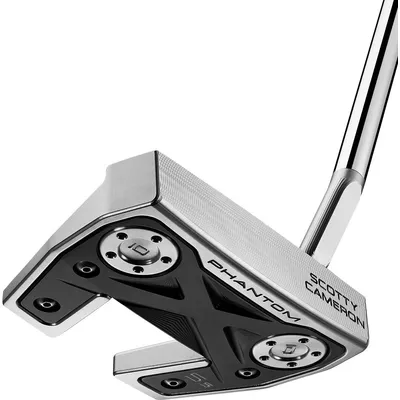How to Choose a Putter?
Searching for a new putter can be a long journey, so when you do ultimately discover the flat stick that sits comfortably in your hands and gives you confidence, it’s a truly magnificent feeling. We take you through the vetting process below to make the decision a little easier.
Step One: Define Your Golf Putting Styles
There are two putting styles:
- An arc swing path: also known as a miniature golf swing, the clubface is open on the backswing, and then returned to the square position for contact.
- Direct approach: where the club goes straight back and then directly forward to the ball.
Defining your stroke will help you discover the right putter and, ultimately, add balance to your game. Arc swingers want to use a putter that is toe-balanced, whereas the direct player wants one that is face-equalized. How do you know this difference?
First, take a putter in your fingers and point the face towards the sky. Now slide the shaft along your fingers until you reach the balance point. If the face remains pointing skyward, you are holding a face-balanced putter. If it twirls downwards, it is balanced in the toe. Here are some examples of toe-balanced putters:
Club Recommendations
Another thing to consider is the shaft-head connection. If the shaft runs into the putter’s head and meets at the heel, like a typical golf club, then it is probably toe-weighted. The weighting on this type of putter varies depending on the model in order to provide differing sweet spots. Lastly, if the shaft runs into the center of the clubface it is almost always face-balanced. Here are some great face-balanced putters:
Club Recommendations
Step Two: Decide on a Blade or Mallet Putter
The choice of a blade or mallet putter is a personal one with no wrong answer. For instance, if you play on slow greens, a bulky mallet putter may be more beneficial. On the other hand, a slight blade could be more advantageous on quick greens. Further, if you have trouble striking your putts at the sweet spot, try a large mallet-style club.
But all in all, it’s a question of feel and aesthetic appeal. So, if a futuristic mallet-head putter inspires more confidence, then by all means go for it.
Step Three: Choose the Most Comfortable Golf Club Swing Weight
Heavy or light? Just like putter style, the weight of the club is dependent on personal feel. On the one hand, a light putter might help you play fast greens, if you prefer taking a fuller stroke. On the other, a heavy putter could easily deliver a solid strike with greater distance on slower greens.
Step Four: Choose the Ideal Putter Length
Most golfers try to maintain an upright position at the address to enhance the visual image of the stroke. However, other golfers are more partial to a lower position. Regardless of what stance you adopt, the putter length you choose must ensure the club’s sole lay flat on the ground.
If it turns out you prefer a shorter stick, don’t pull out a hacksaw and do the job yourself; shafts and club heads are designed to be weight-balanced. Therefore, see a professional and get your favorite putter head re-shafted, or save some money and choke down on the grip.
There are also a few specialty putters to consider:
- Some players prefer over-sized handles that strive to fill your palms and, in turn, quiet the hands as you take your shot.
- Extra-long putters are renowned green instruments that effectively anchor the club to your body for a more stable approach.
- Strikers with aiming devices help mediate incorrect tendencies that often pull putts to the left or push them to the right.
Choosing the Right Putter for You
In the end, when looking for the ideal putter, it’s imperative that you know your game. Even if you’re a beginner with just a few rounds under your belt, familiarizing yourself with your stroke, local courses, logistical and stylistic preferences will work wonders when it finally comes time to choose!









